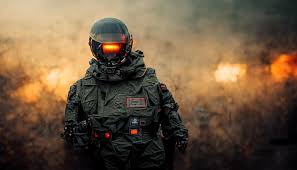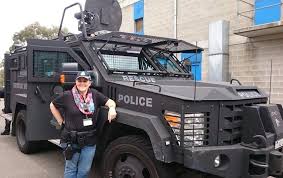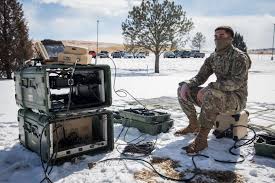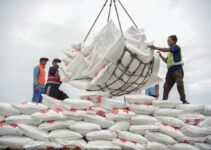Contents
ToggleTactical operations form the cornerstone of strategic execution in military, law enforcement, and emergency management. This practice encompasses a wide range of methodologies, tools, and decision-making processes aimed at achieving specific objectives under often challenging and dynamic conditions. From military engagements to civilian crisis management, tactical operation are a blend of art and science, requiring precision, adaptability, and strategic foresight.
The Essence of Tactical Operations

Tactical operations involve the execution of detailed plans to achieve specific goals. These operations often take place in high-stakes environments where rapid decision-making and precise execution are critical. While the term is frequently associated with military engagements, it also applies to law enforcement, counterterrorism, disaster response, and corporate crisis management.
In the military context, tactical operation are designed to achieve immediate or short-term objectives that support overarching strategic goals. For example, securing a specific location or neutralizing an immediate threat contributes to broader strategic aims like territorial control or conflict resolution.
Key Principles of Tactical Operations
Several fundamental principles guide the execution of tactical operations:
- Objective: Every tactical operation begins with a clear and achievable objective. Defining the mission’s goal ensures all actions are purpose-driven.
- Coordination: Effective operations require seamless coordination between multiple units or teams. Clear communication and collaboration are vital to avoid errors and duplication of effort.
- Adaptability: The dynamic nature of operational environments demands flexibility. Plans may need to be adjusted in real-time to respond to unexpected challenges or opportunities.
- Security: Maintaining operational security prevents adversaries from gaining an advantage. Protecting sensitive information and ensuring confidentiality are crucial.
- Simplicity: While tactical operation often involve complex components, simplicity in planning and execution minimizes confusion and enhances efficiency.
Tools and Technologies in Tactical Operations
Modern tactical operations heavily rely on advanced tools and technologies to enhance effectiveness and precision. These include:
- Surveillance Systems: High-tech drones, satellites, and ground-based sensors provide real-time intelligence, allowing operators to monitor terrain and adversary movements.
- Communication Equipment: Secure and reliable communication networks are critical for coordinating between teams. Advanced radio systems, encrypted messaging platforms, and satellite communication ensure uninterrupted connectivity.
- Weaponry and Gear: In military and law enforcement contexts, specialized weaponry and protective gear enable operators to perform their tasks effectively while ensuring their safety.
- Simulation and Training Software: Tactical operation demand rigorous training. Simulation technologies allow teams to rehearse scenarios, improving readiness and performance.
- Data Analytics and AI: Artificial intelligence and data analytics play an increasingly significant role in planning and executing tactical operations. These technologies analyze vast amounts of information to identify patterns and provide actionable insights.
Tactical Operations in Military Contexts

In military applications, tactical operations are executed at the battalion or company level. These operations often involve maneuvers, defensive positions, and offensive strikes to neutralize enemy forces or secure strategic locations.
Case Study: Urban Warfare
Urban warfare presents unique challenges in tactical operation. Densely populated areas and complex building layouts require meticulous planning. Special Forces often employ methods like coordinated raids, rooftop insertion, and the use of precision-guided munitions to minimize collateral damage while achieving objectives.
Naval and Aerial Tactical Operations
Naval and aerial forces also conduct specialized tactical operations. Naval tactics might involve blockades, amphibious landings, or anti-submarine warfare, while aerial operations focus on reconnaissance, airstrikes, and close air support for ground troops.
Tactical Operations in Law Enforcement
Law enforcement agencies conduct tactical operations to address criminal activity, hostage situations, or civil disturbances. These operations emphasize minimizing harm to civilians while neutralizing threats.
Special Weapons and Tactics (SWAT)
SWAT teams are trained for high-risk operations such as hostage rescues and counter-terrorism. They employ advanced equipment, including ballistic shields, armored vehicles, and breaching tools, to safely execute their missions.
Crowd Control and Riot Management
In situations involving large crowds or civil unrest, tactical operation aim to restore order while respecting citizens’ rights. This requires a balanced approach, combining negotiation and minimal force to achieve peaceful resolutions.
Emergency and Disaster Response Operations
Tactical operations are not limited to conflict scenarios. Emergency management teams use tactical principles to respond to natural disasters, industrial accidents, and public health crises.
Search and Rescue Missions
In disaster-stricken areas, tactical operations prioritize search and rescue missions. Coordinated efforts between ground teams, aerial units, and canine search teams ensure rapid responses to save lives.
Medical Tactical Operations
Medical personnel also conduct tactical operation in emergencies. These include setting up field hospitals, triaging patients, and ensuring the rapid evacuation of critically injured individuals.
Challenges in Tactical Operations

Despite technological advancements and rigorous training, tactical operations face several challenges:
- Dynamic Environments: Rapidly changing circumstances require constant situational awareness and adaptability.
- Resource Limitations: Limited personnel, equipment, or time can constrain operational effectiveness.
- Human Factors: Stress, fatigue, and communication breakdowns can impact decision-making and coordination.
- Ethical Considerations: Tactical operation, especially in civilian settings, must balance achieving objectives with minimizing harm and respecting human rights.
The Role of Leadership in Tactical Operations
Leadership is critical to the success of tactical operations. Commanders and team leaders must possess strong decision-making skills, clear communication abilities, and the capacity to inspire confidence in their teams.
Strategic Decision-Making
Leaders must evaluate intelligence reports, assess risks, and develop actionable plans. The ability to anticipate adversary moves and prepare contingencies is essential.
Team Morale and Cohesion
Effective leadership fosters team morale and cohesion. By instilling trust and maintaining a focus on shared objectives, leaders ensure their teams remain united under pressure.
Future Trends in Tactical Operations
The landscape of tactical operations is constantly evolving, driven by technological advancements and changing geopolitical dynamics. Emerging trends include:
- Autonomous Systems: Drones and robotic units are becoming integral to tactical operations, reducing risks to human personnel.
- Enhanced Training Simulations: Virtual reality (VR) and augmented reality (AR) technologies are revolutionizing training, allowing teams to experience realistic scenarios in safe environments.
- Cybersecurity Integration: With increasing reliance on digital systems, cybersecurity measures are now critical components of tactical operation to prevent cyberattacks that could compromise missions.
- Sustainable Operations: Environmental considerations are influencing tactical planning, with a focus on minimizing ecological impact during operations.
Conclusion
Tactical operations remain an essential aspect of modern-day problem-solving across various fields, from military engagements to civilian emergency responses. Combining strategic planning, advanced technology, and skilled personnel, these operations demonstrate the importance of adaptability and precision in achieving critical objectives. As challenges continue to evolve, so too will the tools and methodologies, ensuring tactical operations remain at the forefront of global security and crisis management efforts.



